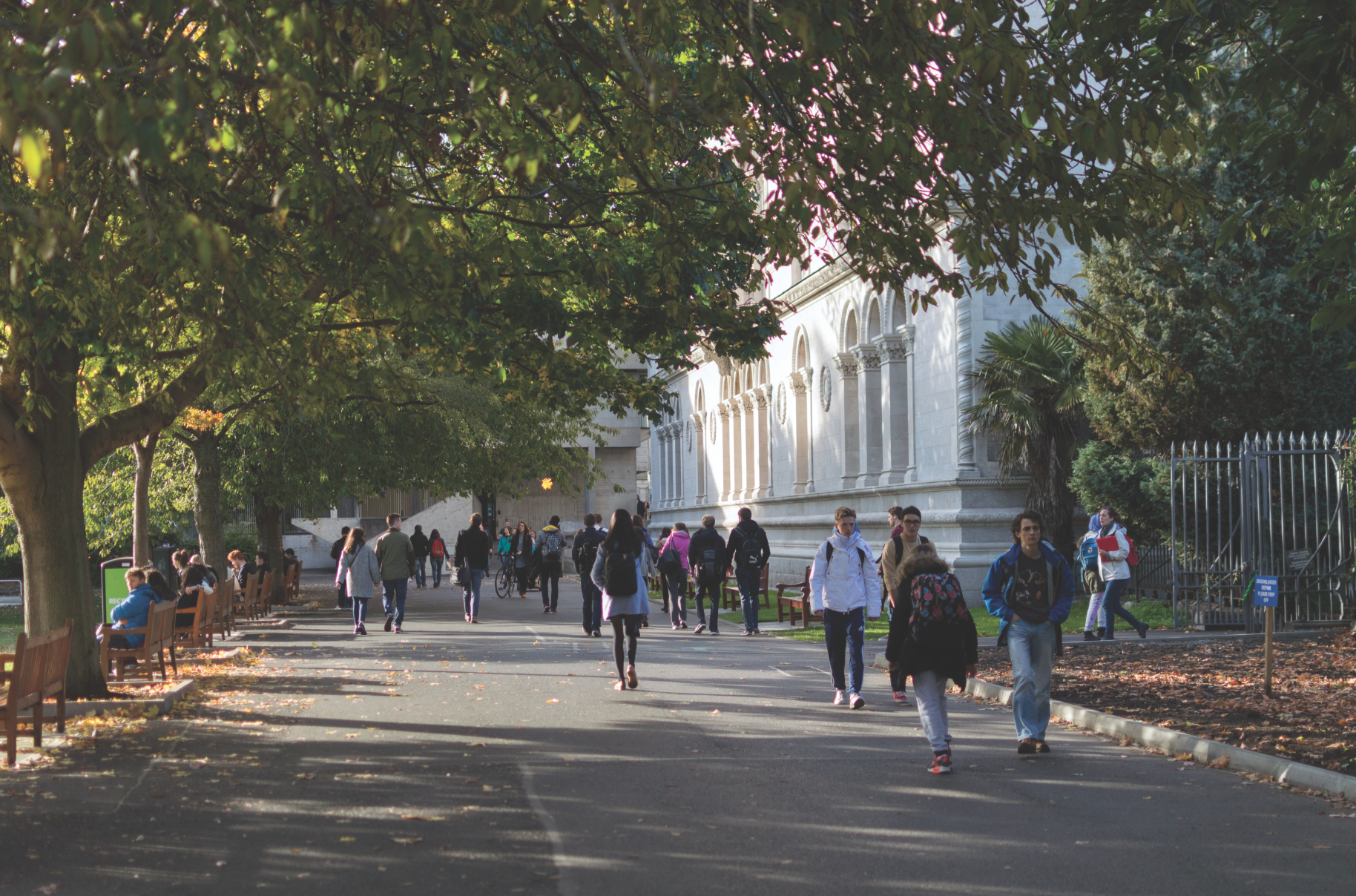
Finding the figures
Bringing together figures from the HEA and College, some trends are clear, although statistics mostly date from 2013/14 at the latest. The headline statistic from the HEA is that College has the lowest number of students in the country in receipt of a grant, at 24% against a 36% average for universities, and a 56% average for Institutes of Technology.
As grants are means tested on gross family income they are useful as shorthand for class. However, there are issues with gross income as a metric – namely that by ignoring assets like land or investments the result is some high asset but lower income families like wealthy farmers receiving grants.
Fee-paying or private secondary education correlates strongly to being middle or upper class, with average annual fees of €5,000. 2516 students entered Trinity in 2013 from 459 schools. Of this 871 (35%) came from private or grind schools through the Leaving Certificate. On average 7% of the Irish population attend fee-paying secondary schools.
Private education
Like grants, this is an imperfect metric. Many notionally public paying schools have the same demographics as private schools as a result of their catchment areas and high ‘voluntary contributions’. Such schools often ape private schools and have similar numbers continuing on to third level.
With catchment area in mind geography plays a significant role in who attends Trinity. In 2013, 37% of students came from Dublin. This further breaks down into 68% from the more generally more affluent Southside against 32% from the Northside. National statistics support this break down, with 99% of 18-20 year-olds in 2013 from Dublin 6 going on to third level while only 15% of school-leavers of the same age from Dublin 17 doing the same.
Those same national statistics supported the intuitive belief that wealthy areas send far more to third level than poorer ones. The traditional ‘Southside’ that stretches from Ballsbridge, through Rathmines and Dundrum down to Killiney has universally high rates of attendance at third level, all higher than 75%. This is also true of the middle class stretch along the coast of the Northside particularly from Clontarf to Howth.
Alternative entry
The Trinity Access Program (TAP) offers a third way of measuring the number of ‘non-traditional students’ attending Trinity. TAP offers a route for those who otherwise may not have the CAO points necessary, or come from backgrounds that would otherwise prevent attendance. 223 (9%) students entered Trinity through TAP in 2013. Participants are not purely from lower socio-economic backgrounds, as TAP also assists students from ethnic minorities.
Even though TAP entrants still only make up less than one in ten, this number marks is substantial increase over the past few years. TAP numbers stood at 233 in 2012 and just 184 in 2011.
Although each of these statistics is limited on their own, taken together they illustrate several things. First, that Trinity is disproportionately attended by the privately educated: 35% of a given year against a national average of 7% were privately educated. This is very much in line with trends across the Anglophone world, where English ‘Public schools’ and American preparatory schools dominate their respective top tier third level institutions.
“Free fees”
It’s interesting to note that this is the situation after twenty years of nominally “free-fees”. The connection between free-fees and private secondary education has been widely discussed, with a common theory that once freed from the cost of university middle class families used that money to finance private secondary schooling.
Although technically there are no university fees in Ireland, Trinity has a ‘student contribution’ of €3,000 per annum. The real cost of a year in full time third level education was estimated by Bank of Ireland as high as €13,000 – and this cost has likely risen since that calculation. Such high costs are the result of Dublin’s housing crisis, as well as the capital being the most expensive place to live in the country.
This is a clear barrier to those from lower socio-economic backgrounds, and goes some way to explaining the class makeup of Trinity. These issues are compounded by supposedly meritocratic CAO points system. The system is lauded for being ‘blind’ and not allowing for discrimination based on background, as each student is anonymous within the system. However this hasn’t prevented league tables being dominated by private schools, Gaelscoileanna and schools located in affluent areas. Trinity has recognised this issue with its ‘feasibility study’ that assess students using supplementary material beyond just CAO points.
Future
Far greater than the difficulties in analysing Trinity’s class makeup is considering possible solutions to the current imbalance. Rather than reduced, it seems likely that the financial burdens faced by students will increase over the next number of years as rents continue to rise and the government contemplates a return to fees or the introduction of student loans.
With various alternatives to the CAO system being explored – though none will be implemented on a large scale soon, if at all – at the core of Trinity’s current demography is the very nature of private secondary schooling in Ireland, a controversial topic that would require considerable political will to reform.
Although Trinity’s internal efforts to extend access, from TAP to the feasibility study, are laudable their effect is limited by the realities of our society and education system.









